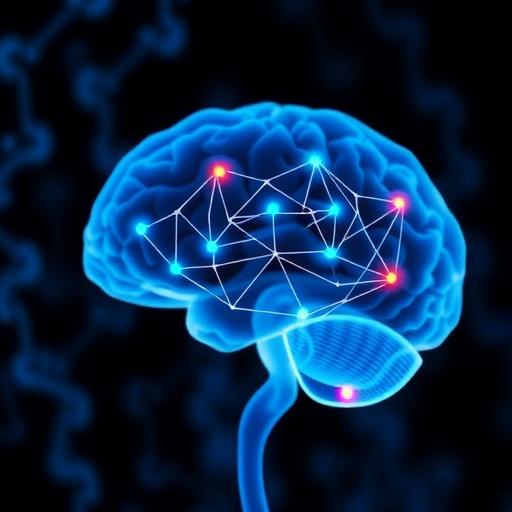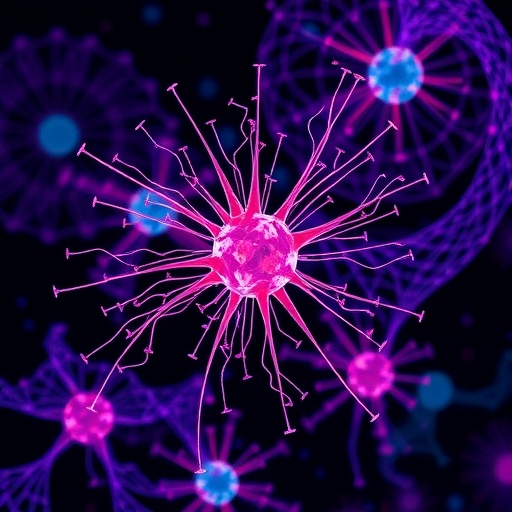Recent research has unveiled groundbreaking insights into infantile epileptic spasm syndrome (IESS), a debilitating neurological condition primarily affecting infants and characterized by sudden seizures known as spasms. This condition typically emerges in the first year of life and poses significant developmental risks, including cognitive impairments and long-term disabilities. Early diagnosis and effective treatment are critical to ameliorate these severe impacts, yet the pathways to appropriate therapeutic interventions remain unclear. A recent study has positioned itself at the forefront of this endeavor, employing advanced data-independent acquisition mass spectrometry (DIA-MS) to identify potential therapeutic biomarkers specifically associated with adrenocorticotropic hormone (ACTH).
The impetus behind this research stems from the central role that ACTH plays in regulating stress responses and its therapeutic efficacy in treating certain forms of epilepsy, including IESS. Traditional therapeutic approaches for epilepsy have largely relied on anticonvulsants, which do not always yield desired outcomes in every patient. Researchers sought to explore whether a more nuanced understanding of hormonal biomarkers—specifically those related to ACTH—could pave the way for novel therapeutic strategies tailored to individual physiological conditions. This study represents a paradigm shift, as it amalgamates cutting-edge proteomics technology with clinical applications, thus offering a dual perspective on both disease mechanisms and treatment modalities.
The use of data-independent acquisition mass spectrometry marks a significant advancement in proteomic analysis. In traditional mass spectrometry, the analysis of protein fragments occurs in a sequential manner that can lead to biases and loss of information for low-abundance proteins. DIA-MS, conversely, captures all ionized peptides within a certain mass range simultaneously, facilitating a more comprehensive and unbiased analysis. This innovative method allows researchers to not only quantify diverse protein levels but also to identify post-translational modifications that may play a critical role in disease processes. The implications of this methodology in the context of IESS cannot be overstated, as it produces a high-resolution profile of proteins that may interact with ACTH, highlighting those that could serve as viable biomarkers for therapy.
In this study, researchers meticulously collected biological samples from infants diagnosed with IESS and subjected these samples to DIA-MS analysis to elucidate the protein profiles present. The findings revealed a host of proteins related to hormonal signaling pathways, inflammation, and neural activity that had not previously been linked to IESS. Intriguingly, several of these proteins exhibited correlations with the levels of ACTH, suggesting potential regulatory mechanisms by which ACTH influences not just seizure occurrence but also broader neurodevelopmental outcomes.
One of the most intriguing aspects of this work is the identification of specific proteins that appear to modulate the activity of ACTH; for instance, those involved in adrenal gland function and neurotransmission. By understanding these interactions, researchers can hypothesize about how manipulating ACTH levels or the proteins that interact with it could potentially alter the course of IESS. Moreover, this research underscores the necessity for personalized medicine approaches that could maximize treatment efficacy by tailoring intervention strategies based on unique biomarker profiles observed in individual patients.
The clinical ramifications of this research are multifaceted. For clinicians, the identification of therapeutic biomarkers would serve as critical diagnostic tools, enabling more precise assessments of IESS severity and potential treatment responses. With the knowledge gained from this study, healthcare providers could design and implement individualized treatment plans that consider both hormonal profiles and genetic predispositions, ultimately enhancing patient outcomes. Furthermore, such an approach paves the way for future studies that could aim to refine hormonal therapies based on real-time biomarker analysis.
In addition to improving individualized care, these findings also prompt a reevaluation of existing treatment algorithms for epilepsy. The traditional reliance on generalized therapies risks overlooking significant variances in patient physiology that could be better addressed through a biomarker-driven approach. This shift could catalyze a broader adoption of precision medicine within neurology, inspiring further research into how hormone-related pathways might influence other forms of epilepsy beyond IESS. The implications of effectively targeting hormonal mechanisms within the context of seizure disorders could usher in a new era of understanding neuroendocrine influences on epilepsy.
Ethical considerations also arise from the potential shift toward biomarker-based therapies. While the promise of achieving greater therapeutic efficacy is alluring, researchers and clinicians must navigate the complexities of ensuring equitable access to advanced testing and treatments that may arise from this research. As personalized medicine grows, the challenge will be to approach these innovations with a perspective focused on patient welfare and accessibility, avoiding the exacerbation of existing disparities in healthcare.
Future research efforts will undoubtedly seek to validate these initial findings and expand upon them. Large-scale studies may be necessary to confirm the clinical utility of the identified biomarkers, determining their reliability across diverse populations affected by IESS. Additionally, researchers must explore how these biomarkers can interact with other therapeutic avenues, including pharmacological interventions and non-pharmacological therapies, to create multifaceted treatment paradigms.
The nuances of IESS, its interaction with hormonal pathways, and the consequent implications for effective treatment underscore the importance of ongoing research in this field. This past decade has witnessed significant advancements in understanding the biological underpinnings of epilepsy, and this new study is a vital piece of that evolving puzzle. By harnessing cutting-edge technology and innovative scientific inquiry, researchers have illuminated a path toward a more profound comprehension of IESS, with the potential to revolutionize treatment approaches and enhance the quality of life for affected children.
In conclusion, the identification of ACTH-specific biomarkers through DIA-MS presents a watershed moment in the landscape of infantile epileptic spasm syndrome treatment. As researchers continue to unlock the complexities of IESS, it is hopeful that the advent of hormonal biomarkers as therapeutic targets will not only expand our understanding of the disease but also yield tangible improvements in clinical care standards. The future promises both challenges and opportunities, and as science advances, the potential to effectively combat IESS becomes an increasingly attainable goal.
Subject of Research: Identification of adrenocorticotropic hormone–specific therapeutic biomarkers in infantile epileptic spasm syndrome.
Article Title: Identification of adrenocorticotropic hormone–specific therapeutic biomarkers in infantile epileptic spasm syndrome using data-independent acquisition mass spectrometry.
Article References: Zou, D., Huang, H., Luo, Z. et al. Identification of adrenocorticotropic hormone–specific therapeutic biomarkers in infantile epileptic spasm syndrome using data-independent acquisition mass spectrometry. Clin Proteom 22, 39 (2025). https://doi.org/10.1186/s12014-025-09559-z
Image Credits: AI Generated
DOI: 10.1186/s12014-025-09559-z
Keywords: Infantile epileptic spasm syndrome, adrenocorticotropic hormone, biomarkers, data-independent acquisition mass spectrometry, precision medicine, proteomics, epilepsy treatment.
Tags: ACTH biomarkers in epilepsycognitive impairments in infantsdata-independent acquisition mass spectrometrydevelopmental risks of infantile epilepsyearly diagnosis of epileptic spasmshormonal regulation in seizuresinfantile epileptic spasmsinnovative epilepsy therapiesneonatal seizure disorderspersonalized treatment for epilepsyproteomics in clinical researchtherapeutic strategies for IESS





